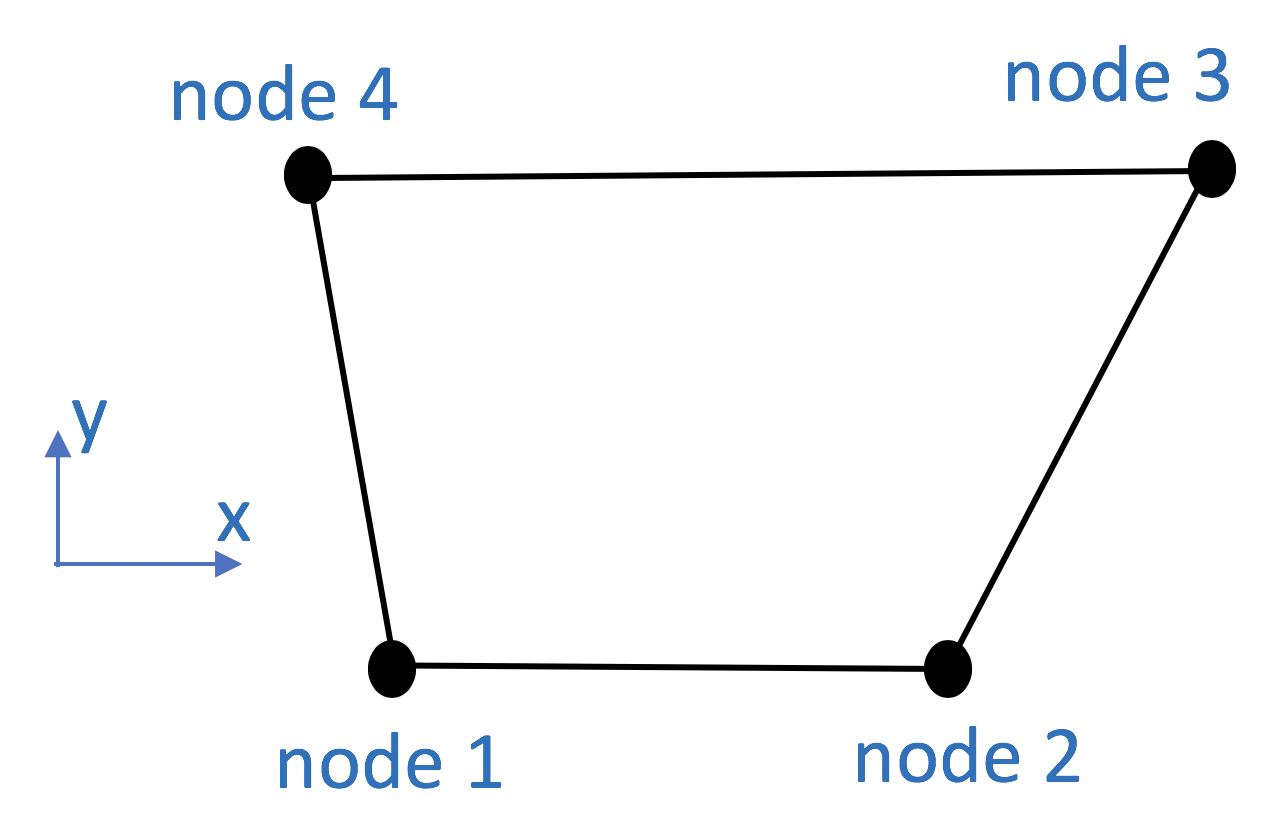3.1.10.17. Quadrilateral Element
This command is used to construct a FourNodeQuad element object which uses a bilinear isoparametric formulation.
Command
element quad $eleTag $iNode $jNode $kNode $lNode $thick $type $matTag <$pressure $rho $b1 $b2>
Argument |
Type |
Description |
|---|---|---|
$eleTag |
integer |
unique element object tag |
$iNode $jNode $kNode $lNode |
integer four nodes defining element boundaries |
input in counter-clockwise order around the element. |
$thick |
float |
element thickness |
$type |
string |
string representing material behavior. The type parameter can be either “PlaneStrain” or “PlaneStress.” |
$matTag |
integer |
tag of nDMaterial |
$pressure |
float |
surface pressure (optional: default = 0.0) |
$rho |
float |
element mass density (per unit volume) from which a lumped element mass matrix is computed (optional: default=0.0) |
$b1 $b2 |
float |
constant body forces defined in the isoparametric domain (optional: default=0.0) |

Fig. 3.1.10.16 Quad Element Node Numbering
Note
The optional arguments must either be all specified or none specified.
Consistent nodal loads are computed from the pressure and body forces.
The valid queries to a Quad element when creating an ElementRecorder object are ‘forces’, ‘stresses,’ and ‘material $matNum matArg1 matArg2 …’ Where $matNum refers to the material object at the integration point corresponding to the node numbers in the isoparametric domain.
Example
The following example constructs a quad element for use in a plane stress problem with tag 1 between nodes 1, 2, 3, 4 with an nDMaterial of tag 1.
Tcl Code
element quad 1 1 2 3 4 "PlaneStress" 1
Python Code
element('quad',1,1,2,3,4, 'PlaneStress', 1, b1, b2, b3)
Code Developed by: Michael H. Scott